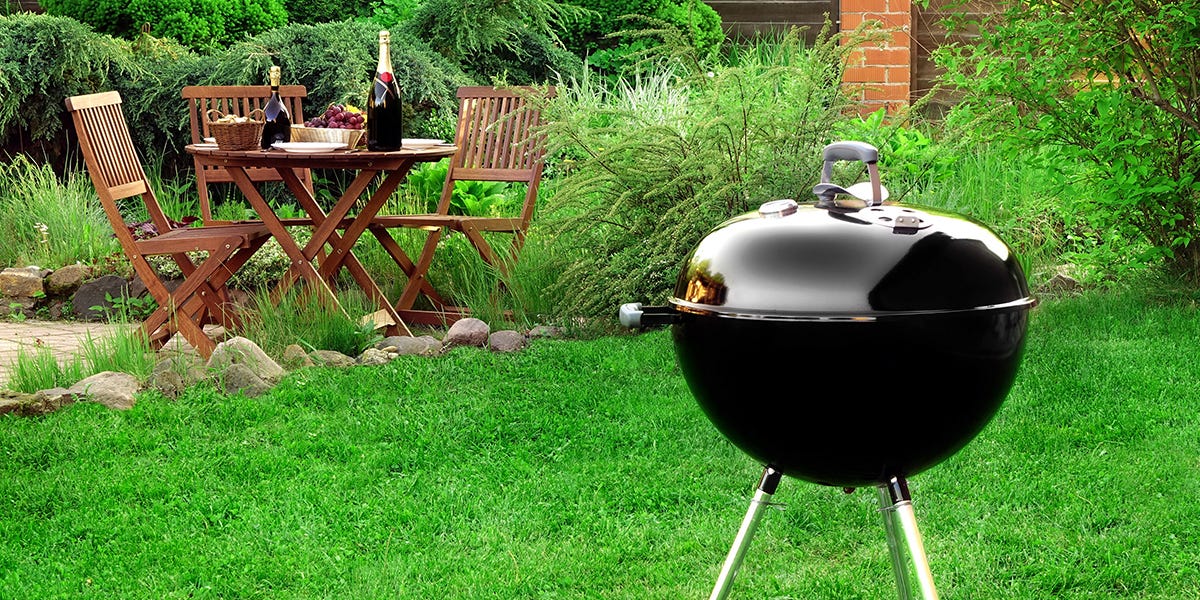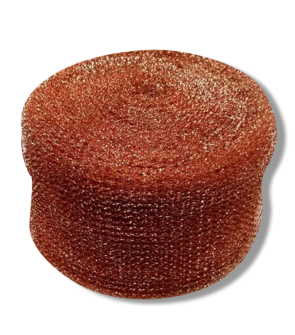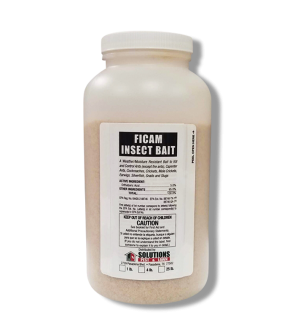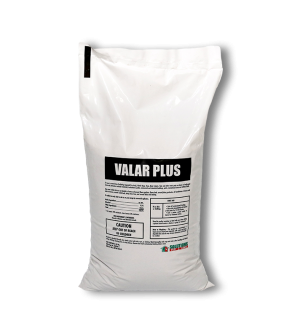How to Stop Summer Lawn Pests
Most Effective Products
How to Stop Summer Lawn Pests: Summer Lawn Pest Control
This page is an professional DIY guide on removing grubs, mosquitos, ticks and fleas from your lawn. Using the products and methods suggested by our experienced pest control specialists will guarantee you on a lawn free from insect activity, damage, and reinfestations within your yard.
Insect activity can take a toll on your turf, especially during the warm days of summer. To keep your yard in ideal conditions you need to ensure proper summer lawn pest control. By keeping an eye out for summer pests like grubs, mosquitos, ticks and fleas you can properly treat the threats each pests provides and keep your lawn looking its best throughout each season.
By following the listed DIY guides you can increase the chance of your lawn maintaining a natural and green color for the summer and learn about the pests that commonly infest your lawns during the warmer seasons in order to properly prevent or control them.
Grubs

Grubs are larvae for insects like beetles or June bugs, and they feed vigorously on the roots of your grass and plants. A well-maintained lawn is an invitation to grubs because a healthy layer of thatch is perfect for grubs to live and feed in. Grubs will continue to feed on the grass roots from underneath the soil and emerge from the soil when they become an adult beetle.
One sign of grub activity you will see is when your turf appears to turn brown in patches across your yard. To check, lift a section of your turf which should roll easily due to the roots being eliminated by the grub activity. Once the turf is lifted, you should see small, white, C-shaped larvae in the soil.
Mosquitos

Each of these tiny pests range between a size of a quarter of an inch to one-half of an inch and the problems they cause are often high. The active growing of vegetation and occasional rainfall in the summer creates an ideal environment for mosquito populations to increase in.
Mosquitos need to deposit their eggs in standing water like birdbaths or rain gutter. Adult mosquitos need tall vegetation to hide in during the day before they emerge in the late evenings.
When it comes to infestations, the priority is quick mosquito control before populations start to increase.
Fleas and Ticks

Fleas and ticks are a summer lawn pests that attach themselves to branches, leaves, and twigs of plants until they come across animals or humans. Once attached to their host they will begin to bite and feed off the animal or person. Both fleas and ticks, can transfer serious, and sometimes fatal diseases to people, young children, and pets.
Though these pests rarely kill lawns, they can do extensive damage when they emerge in the warmer summer months, because these pests will burrow into your turf, thinning the area until it latches onto you or your pet.
Treatment for Summer Lawn Pest
One of the most important things you can do is to start an preventative treatment before or as soon as pest activity begins. This is especially hard because most of the time you will not know when fleas, ticks, or grubs are inhabiting your lawn until it is already becoming thin, patchy brown turf.
However, by carrying out the listed step-by-step care program you can successfully maintain your summer lawn against all grubs, ticks, fleas, and mosquitos.
Step 1: Apply Valar Plus Bifenthrin Granules to Lawn

Valar Plus Bifenthrin Granules is a granular insecticide that is labeled to treat many different lawn insects. This product has a residual effect that can last up to 3 months and can be broadcast over your entire yard to address pests in the turf.
The typical application rate is 2.3 pounds of Valar Plus Bifenthrin Granules to treat 1,000 square feet of lawn. To broadcast the Valar Plus Bifenthrin Granules, you could use either a push spreader or a hand spreader like the Plantmates Scatterbox.
While both styles are easy to use, a broadcast may be better suited for larger lawns as it holds more granules than a hand spreader and can cover a lot of ground in a short amount of time. If you need to spread granules on a flowerbed, around trees or are covering a smaller area and want to do it quickly yet precisely, the Plantmates Scatterbox hand spreader is ideal.
After measuring the square footage of your lawn (measure and calculate your lawn's length x width), add the appropriate amount of Valar Plus Bifenthrin Granules to your spreader and then broadcast it uniformly over your entire lawn while walking at a steady pace.
Spread the Valar Plus Bifenthrin Granules in flower beds, around trees, and places where you have noticed pest activity.
Step 2: Broadcast Application of Reclaim IT

Reclaim IT is a liquid insecticide that can cover a large variety of insects and effectively control their population for up to 90 days when sprayed.
Since you will be broadcast spraying the Reclaim IT solution over your granule application, you will use the same square footage measurement from earlier. For a general application, spray Reclaim IT at a rate of 1 oz. per gallon to cover 1,000 sq. ft.
For an easier broadcast spray application, we suggest using Reclaim IT with a hose end sprayer so that enough water is used to sufficiently treat the area. To accomplish uniform control when applying to dense grass foliage, use volumes of up to 10 gallons per 1,000 sq. ft. Shake well and pump your sprayer.
Also apply Reclaim IT around the perimeter and entry points of your home to discourage any pests from coming into your home.
Step 3: Apply Ficam Insect Bait

Ficam is an orthoboric acid insecticidal bait that mimics food. Once an insect ingest the Ficam Bait it will quickly eliminate them within several hours.
You will apply Ficam all over the yard especially in areas where insects have been seen (gardens, near fruit-bearing trees, vegetables, and areas of high moisture).
To use Ficam you will need a granular spreader or you can shake the bait out directly from the container. Determine first how much Ficam Bait you will need by calculating the square footage of the area you wish to treat. To do this, measure (in feet) and multiply the area length and width (length x width = square footage). Ficam should be applied at a rate of 2 lbs. per 1,000 sq. ft. or 6 oz. per 100 sq. ft. in garden beds or small areas.
Apply Ficam as a thin layer evenly all over the yard as a broadcast treatment especially in areas with high moisture and near trees or vegetation where insects have been spotted. Monitor the area after a few days to check for pest activity. Reapply with a follow-up application every 4 to 6 weeks until there is no more presence of targeted insects.
Step 4: Seal Cracks and Crevices with Caulk and Copper Mesh

After you have treated the outside of your home with the appropriate use of chemical solution or granular products then you can carry out the last preventative measures.
Start by sealing and closing off any potential entry points into your home, both indoors and outdoors. Use caulk to block passageways, cracks, crevices, or small holes around the perimeter of your home. For more larger cracks, holes, openings, and voids apply a copper mesh that summer pests may use to enter your home.
By blocking access into your property pests will have a harder time infesting your home.
Key Takeaways
What are Common Pests that Invade Your Summer Lawn?
- Grubs, ticks, fleas, and mosquitos are common pests that will infest your lawn during warmer, months typically summer. Grubs, ticks, and fleas infestations will not be as easy recognized as mosquitos since signs of their activity will not show until turf is already thin and brown. Signs of mosquito infestations are rather immediate as they will target people or animals for sources of food.
When Should I Begin Treating My Lawn for Summer Pests?
- For best control, apply these products from April to September as this is when insect activity starts to occur. Specific rates for your lawn should be based on the climate and weather conditions based on your location. If you live in an area that has cooler weather, these preventative measures must be followed as grubs, fleas, and ticks can thrive in the soil during this time.
How to Prevent Summer Pests from Invading Your Lawn?
- The best way to keep summer pests out of your lawn is to apply Bifren LP and Reclaim IT to keep a barrier around your lawn from pests. Unattended lawns provide hiding and food sources that pests need to thrive in. You should also apply a Ficam Bait around the areas with high activity to prevent insects from establishing themselves. Lastly, apply a caulk or mesh copper wire to openings inside and outside your home to make it harder for pests to invade.














































































































































































































































































































































































































































































































































